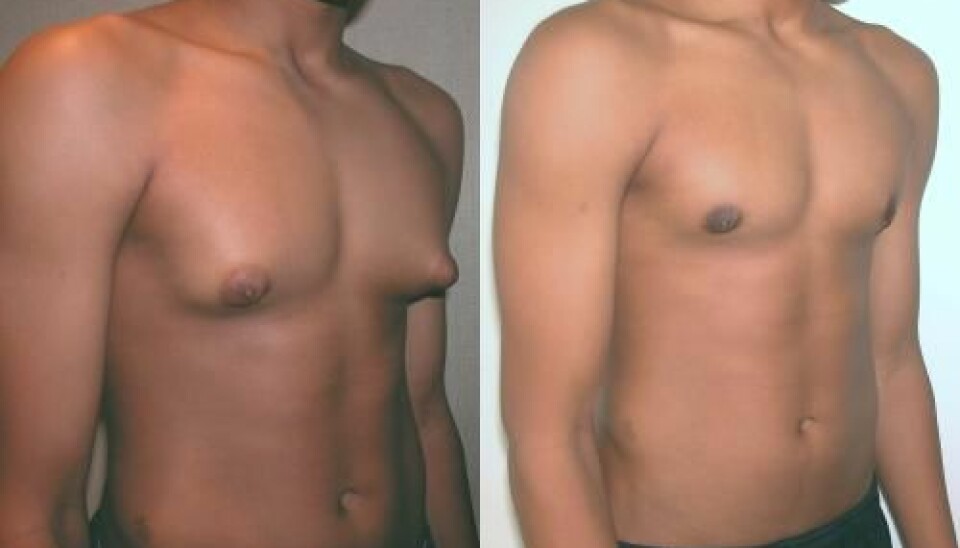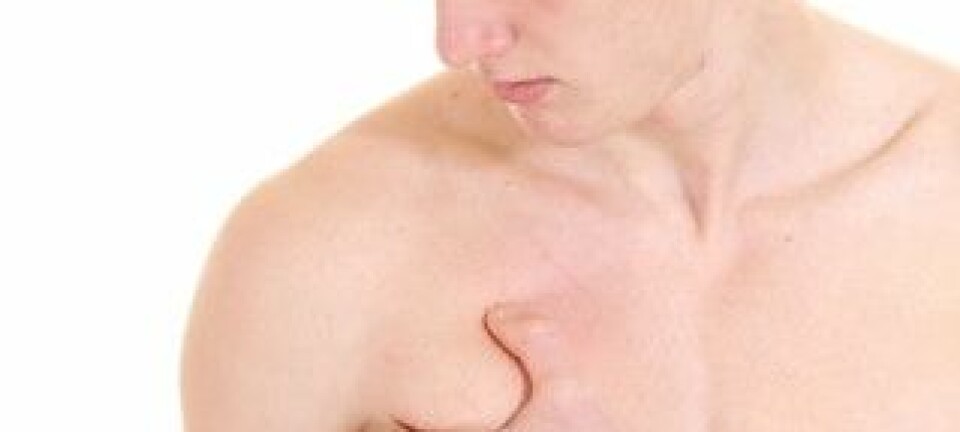
One in two boys develops breasts
New research indicates that more than half of all Danish boys develop breasts during puberty. This is a source of worry and embarrassment for many of them.
When puberty sets in, it is not only in the girls’ locker room that breasts start to appear.
Scientists have, for the first time, studied the prevalence of breast development in Danish boys, and the new study suggests that more than half of all Danish boys develop mammary glands during puberty.
”When we looked at boys who are in a particular stage of their puberty, we observed that up to 60 percent of the boys had breast development,” says Mikkel Grunnet Mieritz, MD, who headed the new study as part of his PhD project at the Department of Growth and Reproduction at the Copenhagen University Hospital.
He points out that the small male breasts are usually harmless, but that for many adolescent boys the female attributes lead to worry and embarrassment.
‘Boy breasts’ a worry for parents
Men do not normally have glandular breast tissue, but boys with gynaecomastia start to form glandular tissue in the chest area.
Paediatrician Kurt Kristensen at Aarhus University Hospital, who did not take part in the study, is not surprised by the new findings:
“As physicians, we consider this an entirely normal phenomenon, and we generally say that around half of all boys get it,” he says.
”But I think many are unaware of the phenomenon, and we are seeing quite a few parents who get terribly worried about what’s going on when their teenage boy suddenly starts developing breasts.”
Adult men also develop breasts
In the scientific community male breast development is known as gynaecomastia, and it can occur in adult men, too.
I think many are unaware of the phenomenon, and we are seeing quite a few parents who get terribly worried about what’s going on when their teenage boy suddenly starts developing breasts.
Doctors distinguish between cases of male breasts consisting solely of fatty tissue (pseudo gynaecomastia) – typically caused by excess weight – and cases in which actual mammary glands are formed (gynaecomastia).
”Men do not normally have glandular breast tissue, but boys with gynaecomastia start to form glandular tissue in the chest area,” says Mieritz.
“Some of the boys experience soreness around their nipples, in the same way that girls describe it when they start developing breasts. Others discover it because the nipple typically starts to protrude.”
He adds that in terms of size, the boys’ breasts can range from ”anything from a small pea to something that looks like the early stages of breast development in girls”.
Mentally tough for boys to get breasts
Even though ’boy breasts’ are entirely normal and harmless for teenage boys, the changes in their chest area are a cause of worry for many of them, says Kristensen:
”It can be tough, mentally, for the boys to see that they suddenly start developing breasts. They may not be keen to go bare-chested on the beach, or they may be shy in the dressing rooms for their physical education classes. In some families, people worry that there may be a lump in the breast and then they believe it might be cancer, so many of these boys are referred to the hospital.”
Mieritz agrees that even tiny breasts can be a tough mental burden for a boy in puberty.
“All this is happening during a vulnerable period in the boys’ lives – a period in which it is important how they appear and develop in relation to other boys. So it is my impression that this is a serious issue for some of the boys.”
However, the researcher has an encouraging message to these boys:
”We know from international studies that in more than 90 percent of the boys the breast development is self-limiting. In general, it is estimated that it disappears within a year and a half,” says Mieritz.
“It is generally accepted that the development of gynaecomastia is caused by an imbalance in sex hormones, though this can rarely be confirmed when measuring these hormones in boys with breast development. We believe that the balance is influenced by other factors, e.g. other hormones and that is what we are trying to elucidate with these studies.”
--------------------
Read the Danish version of this article at videnskab.dk
Translated by: Dann Vinther






